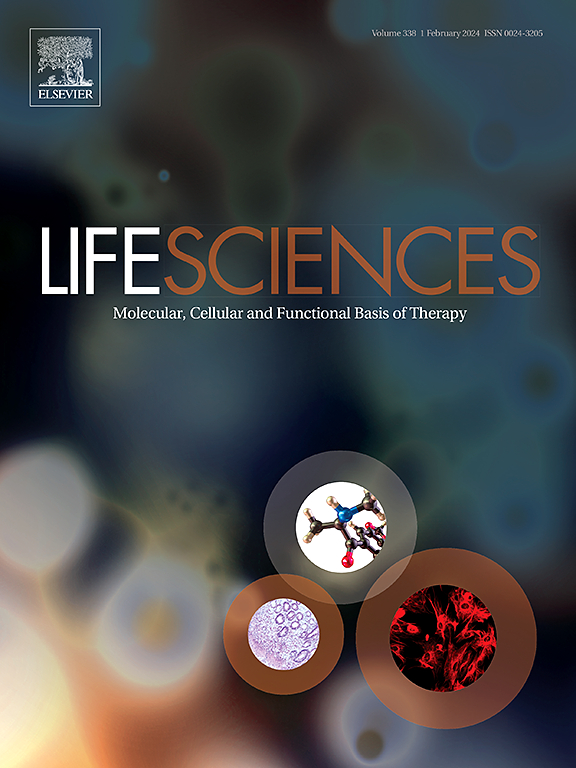A novel chemical chaperone ameliorates osteoblast homeostasis and extracellular matrix in osteogenesis imperfecta
IF 5.2
2区 医学
Q1 MEDICINE, RESEARCH & EXPERIMENTAL
引用次数: 0
Abstract
Aims
Osteogenesis imperfecta (OI) is a collagen I-related heritable family of skeletal diseases associated to extreme bone fragility and deformity. Its classical forms are caused by dominant mutations in COL1A1 and COL1A2, which encode for the protein α chains, and are characterized by impairment in collagen I structure, folding, and secretion. Mutant collagen I assembles in an altered extracellular matrix affecting mineralization and bone properties and partially accumulating inside the cells, leading to impaired trafficking and cellular stress. Recently, the chemical chaperone 4-phenylbutyrate (4-PBA) has been proposed as an innovative drug for OI based on its ability to restore intracellular homeostasis, stimulate secretion, and ameliorate collagen-producing cell functions, positively affecting bone properties. However, the limited half-life of the molecule represents a serious hurdle for its use.
Materials and methods
To efficiently target cellular stress as OI treatment, two new compounds were designed by molecular modelling based on the 4-PBA structure to increase its stability and its ability to implement protein secretion. The short butyryl fatty acid chain of 4-PBA was substituted with a nitro functional group or with a glycine, respectively. The latter, N-benzyl glycine (N-BG), showed the best docking score, less toxicity, and higher stability than 4-PBA.
Key findings
N-BG improved extracellular matrix quality and mineral content together with ameliorating OI cells' homeostasis by increasing ER-associated degradation pathway, reducing apoptosis, and stimulating protein secretion, thus facilitating intracellular clearance from accumulated misfolded proteins.
Significance
In conclusion, N-BG represents a novel potential available compound to target altered homeostasis in OI with the aim to ameliorate the disease phenotype.
一种新的化学伴侣改善成骨不全的成骨细胞稳态和细胞外基质。
目的:成骨不全症(Osteogenesis imperfecta, OI)是一种与i型胶原蛋白相关的遗传性骨骼疾病家族,与骨骼极度脆弱和畸形有关。其经典形式是由编码蛋白α链的COL1A1和COL1A2的显性突变引起的,其特征是胶原I结构、折叠和分泌受损。突变型胶原I在改变的细胞外基质中组装,影响矿化和骨骼特性,部分积聚在细胞内,导致运输受损和细胞应激。最近,化学伴侣4-苯基丁酸酯(4-PBA)被认为是一种治疗成骨不全症的创新药物,因为它具有恢复细胞内稳态、刺激分泌、改善胶原生成细胞功能、积极影响骨特性的能力。然而,该分子有限的半衰期对其使用构成了严重障碍。材料和方法:为了有效靶向细胞应激治疗OI,基于4-PBA结构,通过分子建模设计了两种新的化合物,以提高其稳定性和实现蛋白质分泌的能力。4-PBA的短丁基脂肪酸链分别被硝基官能团和甘氨酸取代。与4-PBA相比,n -苄基甘氨酸(N-BG)的对接评分最好,毒性较小,稳定性较高。主要发现:N-BG通过增加er相关降解途径、减少细胞凋亡、刺激蛋白质分泌,促进细胞内累积错误折叠蛋白的清除,改善细胞外基质质量和矿物质含量,改善OI细胞的稳态。意义:总之,N-BG代表了一种新的潜在可用化合物,可以靶向OI中改变的体内平衡,以改善疾病表型。
本文章由计算机程序翻译,如有差异,请以英文原文为准。
求助全文
约1分钟内获得全文
求助全文
来源期刊

Life sciences
医学-药学
CiteScore
12.20
自引率
1.60%
发文量
841
审稿时长
6 months
期刊介绍:
Life Sciences is an international journal publishing articles that emphasize the molecular, cellular, and functional basis of therapy. The journal emphasizes the understanding of mechanism that is relevant to all aspects of human disease and translation to patients. All articles are rigorously reviewed.
The Journal favors publication of full-length papers where modern scientific technologies are used to explain molecular, cellular and physiological mechanisms. Articles that merely report observations are rarely accepted. Recommendations from the Declaration of Helsinki or NIH guidelines for care and use of laboratory animals must be adhered to. Articles should be written at a level accessible to readers who are non-specialists in the topic of the article themselves, but who are interested in the research. The Journal welcomes reviews on topics of wide interest to investigators in the life sciences. We particularly encourage submission of brief, focused reviews containing high-quality artwork and require the use of mechanistic summary diagrams.
 求助内容:
求助内容: 应助结果提醒方式:
应助结果提醒方式:


